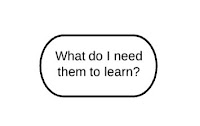Different or Similar? LEDx Compared to Other Design Approaches
Brad Griffith
I can vividly remember the first time I had to teach others to do something in a professional environment. I was 17 years old and a senior in high school working at Chili's Grill & Bar when my manager approached me about an opportunity for extra pay conducting new employee orientation on Saturdays. I agreed quickly! I had no idea what this experience truly entailed at first, but ended up having to help individuals complete a list of tasks: complete tax paperwork, study and complete an exam for ServSafe safe food handling certification, and conduct teambuilding exercises to acculturate my new coworkers. My first classroom experience teaching occurred during graduate school as an instructor for Italian. In this case, we were first given an exam to ensure we were able to conduct a lecture in Italian, followed by a crash course on how to teach, and then being given a syllabus for the course that instructed us to make it through the first half of a textbook by the end of the semester.
Both of these initial learning environment experiences have something in common with how I have approached creating learning experiences in the past: I start with the syllabus and work my way backwards.
The first thing I consider is the learning outcome of a particular course:
Next, I consider the possibilities of how to get there. This usually consists of assessing which assignments will need to be created/graded. More often than not in the courses I have taught, this is predetermined by having a certain number of exams/papers, or assignments of a specific type that may be departmentally required.
Following the decision of which assignments to require and how they would be structured, I would usually consider how the content would be presented. I made classic mistakes of putting large chunks of information out there all at once in my early days of teaching. I have since learned that assignments and content must be presented in chunks. I notice as well that my early stages of instruction seem boring to me now, for lack of a better word. I was so concerned about meeting the objective of a course or class session that I sometimes would fail to consider the interactions or how I would be providing feedback to my students as they learn.
LEDx differs from this approach greatly. You can probably tell from what I've described above that I never allowed much room for empathy in construction of my learning environments. I now consider the needs of the people I'm going to be teaching greatly since that tends to be the first barrier that will prevent you from accomplishing the learning objective. I also tended to just dive right in with constructing content and assignments without gaining a better understanding of how I would communicate their expectations. It was rare that I would do a prototype or attempt to envision how my course would take place in reality. There would be some occasions where I would construct a learning environment in Desire2Learn and receive feedback from my students that they couldn't figure out how to proceed. LEDx has most importantly taught me the value of prototyping and making sure that all of the steps of preparation must be completed in order so that the learning environment is successful.



No comments:
Post a Comment